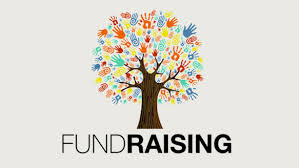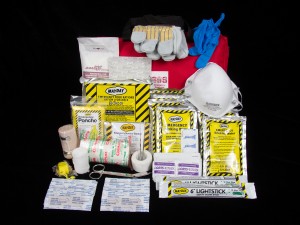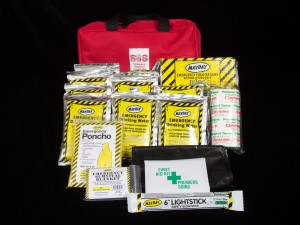Blog

In the true spirit of the season, and to help keep family and friends out of harm’s way, here are some tips and helpful hints for The 12 Days of Holiday Safety:
On the First Day … prepare your home for the holidays – and safety. Make sure you have a working carbon monoxide detector, smoke alarm, fire extinguisher and a first aid kit. If you live in an apartment or are staying in a hotel, know where the fire alarms and emergency exits are located.
On the Second Day … make a plan. Your family may not be together when an emergency occurs. Plan how to meet or how to contact one another, and discuss what you would do in different situations. Watch this video for helpful tips.
On the Third day … think about special needs. Establish a personal support network of friends, relatives, health-care providers, and neighbours who understand your personal needs. Write down details about accommodation needs, allergies, family medical history, medical conditions, etc. For more information, check out this Guide.
On the Fourth Day … decorate with safety in mind. Never leave burning candles unattended and keep them away from children and pets, decorations and wrapping paper. Cut candle wicks short to prevent a high flame, and if candles are used in a centrepiece, make sure they don’t burn low enough to ignite the decoration.
On the Fifth Day … make your tree safe. When buying a real tree, check that it is fresh (needles are hard to pull off). Water the tree daily – trees can consume up to four litres of water a day. Place the tree away from high traffic areas, doorways, heating vents, radiators, stoves, fireplaces and burning candles. If young children are around, use safe decorations. Health Canada has some great holiday safety tips.
On the Sixth Day … keep lights bright. Only use lights that have been certified by a recognized organization such as CSA, ULC or C-UL. Make sure you use indoor lights inside your home and outdoor lights outside. Check the light strings and extension cords, throwing out any that are frayed or have exposed wires, loose connections or broken sockets. Never run electrical cords through doorways or under carpets. Turn off all holiday lights before you go to bed or leave your home.
On the Seventh Day … choose appropriate toys. Always follow age recommendations when choosing toys for children. Pay attention to Health Canada’s recalls and safety alerts.
On the Eighth Day … get ready for severe winter weather. Blizzards, ice storms, and high winds can develop quickly. Listen to local radio or television stations for severe weather warnings and advice.
On the Ninth Day … prepare your car for an emergency. Install winter tires and make sure windshield washer fluid is always topped up. Prepare a kit to keep in your vehicle in case of an emergency, with items such as a blanket, a candle in a deep can and matches, and first aid kit with a seat belt cutter. Use this list to help you.
On the 10th Day … prevent illness. Protect yourself and others from getting the flu. A flu shot is the safest and most effective way to prevent infection, to reduce the severity of your symptoms if you do get sick, and to keep from spreading the virus to others.
On the 11th Day … learn first aid. Knowing first aid could save a life. Contact your local Canadian Red Cross or St. John Ambulance office to find out about first aid courses in your area.
On the 12th Day … know the risks. Across Canada, we face a number of hazards, such as earthquakes in BC, blizzards in Nunavut and ice storms in Ontario. Knowing the risks where you are can help you better prepare and eliminate stress… especially during the holiday season.
Credit – Get Prepared – Government of Canada, 2015-01-15
Blog

Earthquake. Natural Disaster. Hurricane. Our newspaper headlines have been talking non-stop about these events, while the kids were getting settled back into school. Now your PAC needs to do some fundraising. But your tired of selling the same old thing to your family, neighbors and friends. Does anyone really need more chocolates, flowers and wrapping paper? Okay, we all need more chocolate! Launch a fundraiser that provides your community an opportunity to get prepared while raising those important dollars at the same time. By selling 72 hour Emergency Preparedness Kits, you provide the tools necessary for families to survive ANY emergency and/or earthquake and your PAC can earn up 10% per kit sold for your PAC.
On October 19th at 10:19am, over 500,000 will join with ShakeOutBC and practice DROP, COVER & HOLD. Register your school and join in to practice being safe during an earthquake https://www.shakeoutbc.ca/
PROTECT your loved ones. RAISE money for your school.
Call 604.277.5855 to get started now
SOS-Fundraiser-Poster-2017
Blog

Back to School Safety and Planning for Emergencies
Now is a good time to review back-to-school safety with your children and check school safety policies. Here are four tips for a safe return to school:
- Review your family emergency plan and check emergency kit supplies
Sit down with your children to talk about different kinds of emergencies and review your family emergency plan. Talk about what to do and where you will meet if you are not together when an emergency takes place. Involve your children in preparing an emergency kit or checking your emergency supplies to make sure you have key items on hand and check expiry dates on batteries and food.
- Be aware of school emergency procedures Make sure you read information from the school about their plan for emergencies, emergency procedures and alternate locations should an emergency take place. Also be sure to check that the school has current emergency contact information for your children, including work, mobile and home telephone numbers.
- Watch for children walking, cycling and coming off school buses
Children are small and easily distracted, and for drivers, this can create dangerous situations on the roads. Be vigilant and alert behind the wheel, especially in school zones. You never know when a small child might step out from between parked cars or off a sidewalk. And parents, take time to remind your children about crossing the street safely, wearing a helmet while cycling, and staying safe on buses.
- Obey crossing guards A crossing guard is there to keep children safe. If you come up to a set of lights while driving, and the light turns green, but the crossing guard still says stop, follow his/her direction and not the traffic light. There might be a child still crossing the street that you can’t see.
Back to School FUNDraising
Tired of the same old fundraisers? In British Columbia, all levels of government recommend that EVERY family should be self sufficient for a minimum of 72 hours in case of ANY emergency. Have your PAC committee sell 72 hour emergency preparedness kits and get YOUR community PREPARED and earn up to $14 for EVERY kit purchased. Call today 604.277.5855 x. 221
Blog

72hr kit for car
When we think of emergency preparedness it is human nature to think on a grand scale – of an earthquake, major flood and/or fire. Although it may be unlikely to be faced with one of these major disasters, there is no doubt that you will be faced with personal emergencies in your lifetime. Major traffic jam due to accident, rain, snow or wind;, power outage, bridge closure or snow storm. Carrying an emergency and/or emergency preparedness kit in your vehicle in case of earthquake will help you in ANY emergency. If you do not want to make something on your own – go to www.sostech.ca and purchase SQ6009 or SQ6010 (images shown) – these are perfect sized kits for the car.
We have created a list of items that you should consider in your kit – we have also rated the importance of each item.
M – MUST have – must have in order to survive
R – RECOMMEND – not required for survival but useful in an emergency
N – NICE to have – not necessary for survival but will make the experience more tolerable
M Water; 2 litres per person per day
M Food Bars; while granola bars and energy bars can be used they are thirst provoking. Try our Coast Guard approved 3600 calorie meal replacement bars
M Running shoes or walking shoes; always keep an extra pair in the car. You may have to walk home or long distances
M Hat; to serve as sun block or cover in the rain
M Gloves; for warmth or to move debris out of the way
R Blanket;
R Emergency (foil) Blanket; small and compact this can be used for shelter and warmth
N Change of clothes;
M First Aid Kit;
M City Map; If you are on foot or a disaster has changed the landscape a good map will help you find your way around
M Paper & Pen;
M Flashlight;
M Toilet paper or kleenex
M Whistle; to alert for help if required
R Duct Tape
R Swiss Army Knife
R Variety of hand tools; think about carrying screw driver, folding shovel & hammer
R Money; $20 in change can come in handy
N AM/FM radio; to keep informed
N Rope; useful for securing shelter
N Garbage Bags; provides protection from rain and can be used for emergency shelter

72hr EP Kit for car

Blog

Mother’s Day is just around the corner. While it has become one of the major holidays in the North America, giving us a chance to honor the individuals in our lives who care for us, why give her the same old gift. Some women will have the luxury of being pampered at home with entertainment and meals prepared for them by family members. Flowers, chocolates, jewelry are among the most popular gifts for Mothers. Flashy gifts are nice, but all that Mom wants is to feel appreciated, loved and safe.
Why not think about safety this time? Here are a few suggestions:
- She likes biking – get her high-visibility clothes.
- Your Mom has a green thumb – she will be thankful for a gardening kit with knee pads, a cooling hat, and protective gloves.
- If she likes to attend live sports events, she will need hearing protection. Buy her fancy ear plugs or noise cancelling ear muffs.
- Is she a DIYer? Wearing a dust mask or a respirator is a must when engaged in home improvement activities – get her one, and she will be well-protected during her favorite DIY project. A safety ladder is another good option for active home improvement enthusiasts.
- Help her take care of the ones she loves most – give her a first aid and/or a 72hr emergency preparedness kit
As you can see, the choices are limitless. Think about what she really needs, you still have time to make the right decision. Celebrate everything that your Mother represents in your life with a gift of safety.
Visit www.sostech.ca for more ideas!
Blog
Some of my friends call me a pessimist…. I think I am a realistic, well-prepared person. Should there ever be a major disaster, or a minor one for that matter, I know my family and I might be on our own for days – maybe even weeks. I want to BE PREPARED. But then again, I am the mom who always has the extra sunscreen, water, and snacks! Most people say, ‘I’ll get my emergency kits tomorrow,’ and tomorrow never comes. But I think: What if it happens tonight? What if you put it off and you’re sitting with your family? You don’t want to sit there wishing you had listened to that inner voice do you? You can put emergency preparedness kits in your home, car, office and more. But why run around trying to collect everything? Afterall, you are busy person. For as little as $150 CAD a family of four can have a starter home kit:
- backpack (you need those hands free)
- 4 x 3600 calorie food bars (shelf life 5 years)
- 24 x sterile water packets (shelf life 5 years)
- 1 x pkg of 20 water purification tablets
- 1 x hand crank flashlight, radio & USB cell phone charger
- 4 x 12hr light sticks
- 4 x whistles
- 4 x ponchos
- 4 x rolls of toilet tissue
- 4 x dust masks
- 4 x solar blanket
- 1 x signal mirror
- 1 x pr safety glasses
- 1 x pr work gloves
- 1 x “Call Police” sign

4 person 72hr emergency preparedness grab n’ go backpack







